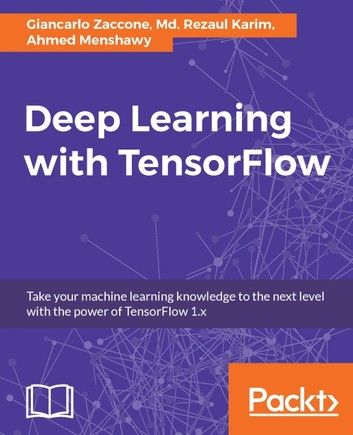| FindBook |
|
有 1 項符合
menshawy的圖書 |
 |
$ 0 電子書 | Deep Learning with TensorFlow
作者:Giancarlo Zaccone,Md. Rezaul Karim,Ahmed Menshawy 出版社:Packt Publishing 出版日期:2017-04-24 語言:英文  看圖書介紹 看圖書介紹
|
|
|
Delve into neural networks, implement deep learning algorithms, and explore layers of data abstraction with the help of this comprehensive TensorFlow guide
About This Book
- Learn how to implement advanced techniques in deep learning with Google's brainchild, TensorFlow
- Explore deep neural networks and layers of data abstraction with the help of this comprehensive guide
- Real-world contextualization through some deep learning problems concerning research and application
Who This Book Is For
The book is intended for a general audience of people interested in machine learning and machine intelligence. A rudimentary level of programming in one language is assumed, as is a basic familiarity with computer science techniques and technologies, including a basic awareness of computer hardware and algorithms. Some competence in mathematics is needed to the level of elementary linear algebra and calculus.
What You Will Learn
- Learn about machine learning landscapes along with the historical development and progress of deep learning
- Learn about deep machine intelligence and GPU computing with the latest TensorFlow 1.x
- Access public datasets and utilize them using TensorFlow to load, process, and transform data
- Use TensorFlow on real-world datasets, including images, text, and more
- Learn how to evaluate the performance of your deep learning models
- Using deep learning for scalable object detection and mobile computing
- Train machines quickly to learn from data by exploring reinforcement learning techniques
- Explore active areas of deep learning research and applications
In Detail
Deep learning is the step that comes after machine learning, and has more advanced implementations. Machine learning is not just for academics anymore, but is becoming a mainstream practice through wide adoption, and deep learning has taken the front seat. As a data scientist, if you want to explore data abstraction layers, this book will be your guide. This book shows how this can be exploited in the real world with complex raw data using TensorFlow 1.x.
Throughout the book, you'll learn how to implement deep learning algorithms for machine learning systems and integrate them into your product offerings, including search, image recognition, and language processing. Additionally, you'll learn how to analyze and improve the performance of deep learning models. This can be done by comparing algorithms against benchmarks, along with machine intelligence, to learn from the information and determine ideal behaviors within a specific context.
After finishing the book, you will be familiar with machine learning techniques, in particular the use of TensorFlow for deep learning, and will be ready to apply your knowledge to research or commercial projects.
Style and approach
This step-by-step guide will explore common, and not so common, deep neural networks and show how these can be exploited in the real world with complex raw data. With the help of practical examples, you will learn how to implement different types of neural nets to build smart applications related to text, speech, and image data processing.
|











